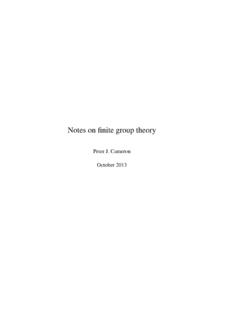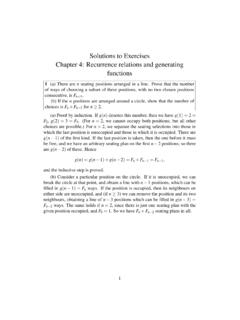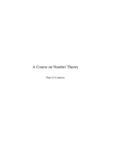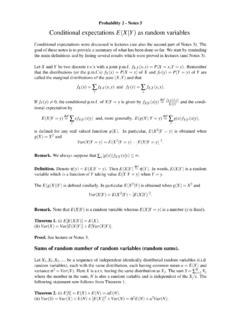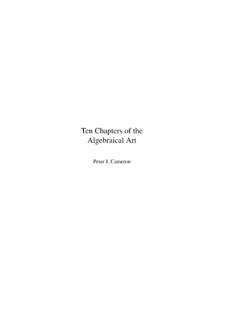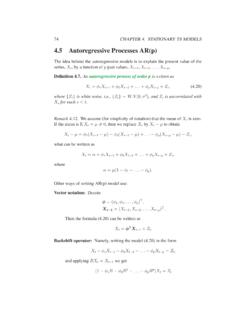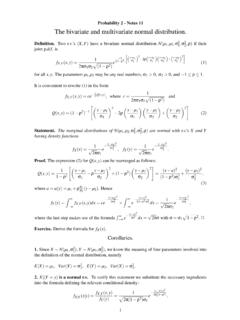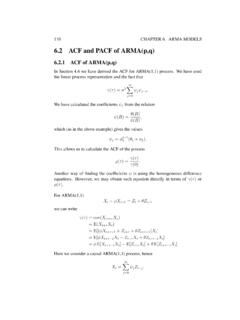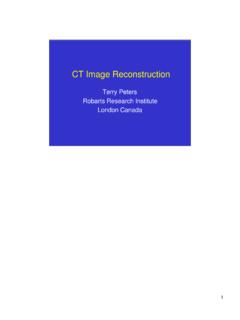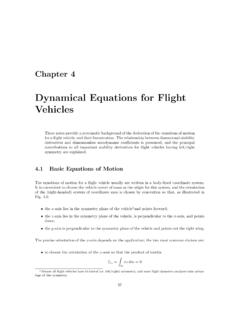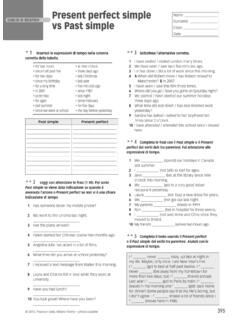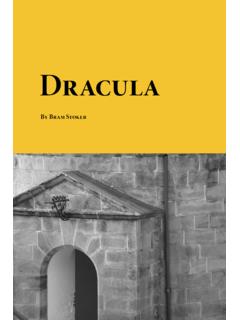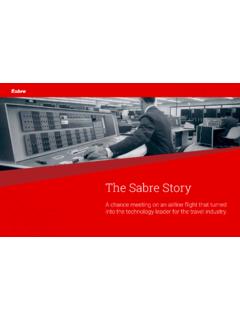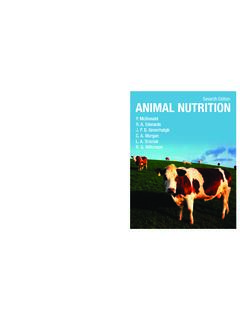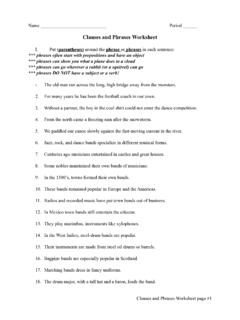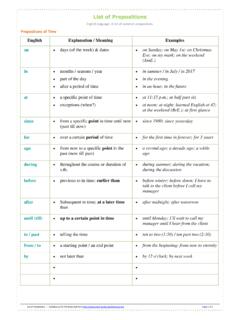Transcription of Notes on Linear Algebra - Queen Mary University of London
1 Notes on Linear AlgebraPeter J. CameroniiPrefaceLinear Algebra has two aspects. Abstractly, it is the study of vector spaces overfields, and their Linear maps and bilinear forms. Concretely, it is matrix theory:matrices occur in all parts of mathematics and its applications, and everyone work-ing in the mathematical sciences and related areas needs to be able to diagonalisea real symmetric matrix. So in a course of this kind, it is necessary to touch onboth the abstract and the concrete aspects, though applications are not treated the theoretical side, we deal with vector spaces, Linear maps, and bilin-ear forms.
2 Vector spaces over a fieldKare particularly attractive algebraic ob-jects, since each vector space is completely determined by a single number, itsdimension (unlike groups, for example, whose structure is much more compli-cated). Linear maps are the structure-preserving maps or homomorphisms of vec-tor the practical side, the subject is really about one thing: matrices. If we needto do some calculation with a Linear map or a bilinear form, we must represent itby a matrix. As this suggests, matrices represent several different kinds of each case, the representation is not unique, since we have the freedom to changebases in our vector spaces.
3 So many different matrices represent the same gives rise to several equivalence relations on the set of matrices, summarisedin the following table:EquivalenceSimilarityCongruenceOrt hogonalsimilaritySame Linear mapSame Linear mapSame bilinearSame self-adjoint :V W :V VformbonV :V basisA =Q 1 APA =P 1 APA =P>APA =P 1 APP,QinvertiblePinvertiblePinvertiblePor thogonalThe power of Linear Algebra in practice stems from the fact that we can choosebases so as to simplify the form of the matrix representing the object in will see several such canonical form theorems in the lecture Notes correspond to the course Linear Algebra II, as given atQueen Mary, University of London , in the first sememster 2005 course description reads as follows.
4 This module is a mixture of abstract theory, with rigorous proofs, andconcrete calculations with matrices. The abstract component buildson the notions of subspaces and Linear maps to construct the theoryof bilinear forms functions of two variables which are Linear ineach variable, dual spaces (which consist of Linear mappings from theoriginal space to the underlying field) and determinants. The concreteapplications involve ways to reduce a matrix of some specific type(such as symmetric or skew-symmetric) to as near diagonal form other words, students on this course have met the basic concepts of Linear al-gebra before.
5 Of course, some revision is necessary, and I have tried to make thenotes reasonably self-contained. If you are reading them without the benefit of aprevious course on Linear Algebra , you will almost certainly have to do some workfilling in the details of arguments which are outlined or skipped over Notes for the prerequisite course, Linear Algebra I, by Dr Francis Wright,are currently available have by-and-large kept to the notation of these Notes . For example, a generalfield is calledK, vectors are represented as column vectors, Linear maps (apartfrom zero and the identity) are represented by Greek have included in the appendices some extra-curricular applications of lin-ear Algebra , including some special determinants, the method for solving a cubicequation, the proof of the Friendship Theorem and the problem of deciding thewinner of a football league, as well as some worked J.
6 CameronSeptember 5, 2008 Contents1 Vector .. and column vectors .. of basis .. and direct sums .. 132 Matrices and Algebra .. and column operations .. determinants .. Cayley Hamilton Theorem .. 293 Linear maps between vector and basic properties .. by matrices .. of basis .. form revisited .. 394 Linear maps on a vector and direct sums .. maps and matrices .. and eigenvectors .. and minimal polynomials .. form .. 52vCONTENTS15 Linear and quadratic forms and dual space.
7 Of basis .. forms .. forms .. of quadratic forms .. and bilinear forms .. forms for complex and real forms .. 646 Inner product products and orthonormal bases .. and orthogonal Linear maps .. 707 Symmetric and Hermitian projections and orthogonal decompositions .. Spectral Theorem .. forms revisited .. diagonalisation .. 788 The complex inner products .. complex Spectral Theorem .. matrices .. 839 Skew-symmetric bilinear forms .. and alternating matrices.
8 Skew-Hermitian matrices .. 88A Fields and vector spaces89B Vandermonde and circulant matrices93C The Friendship Theorem97D Who is top of the league?101E Other canonical forms105F Worked examples1072 CONTENTSC hapter 1 Vector spacesThese Notes are about Linear maps and bilinear forms on vector spaces, how werepresent them by matrices, how we manipulate them, and what we use this DefinitionsDefinition an algebraic system consisting of a non-empty setKequipped with two binary operations+(addition) and (multiplication) satisfyingthe conditions:(A)(K,+)is an abelian group with identity element 0 (calledzero);(M)(K\ {0}, )is an abelian group with identity element 1.
9 (D) thedistributive lawa(b+c)=ab+acholds for alla,b,c you don t know what an abelian group is, then you can find it spelled out indetail in Appendix A. In fact, the only fields that I will use in these Notes are Q, the field of rational numbers; R, the field of real numbers; C, the field of complex numbers; Fp, the field of integers modp, wherepis a prime will not stop to prove that these structures really are fields. You may have seenFpreferred to 1. VECTOR SPACESD efinition space Vover a fieldKis an algebraic system consistingof a non-empty setVequipped with a binary operation+(vector addition), andan operation of scalar multiplication(a,v) K V7 av Vsuch that the following rules hold:(VA)(V,+)is an abelian group, with identity element 0 (thezero vector).
10 (VM) Rules for scalar multiplication:(VM0) For anya K,v V, there is a unique elementav V.(VM1) For anya K,u,v V, we havea(u+v)=au+av.(VM2) For anya,b K,v V, we have(a+b)v=av+bv.(VM3) For anya,b K,v V, we have(ab)v=a(bv).(VM4) For anyv V, we have 1v=v(where 1 is the identity element ofK).Since we have two kinds of elements, namely elements ofKand elements ofV, we distinguish them by calling the elements ofKscalarsand the elements ofV vector space over the fieldRis often called areal vector space, and oneoverCis acomplex vector first example of a vector space that we meet is theEuclideanplaneR2.


